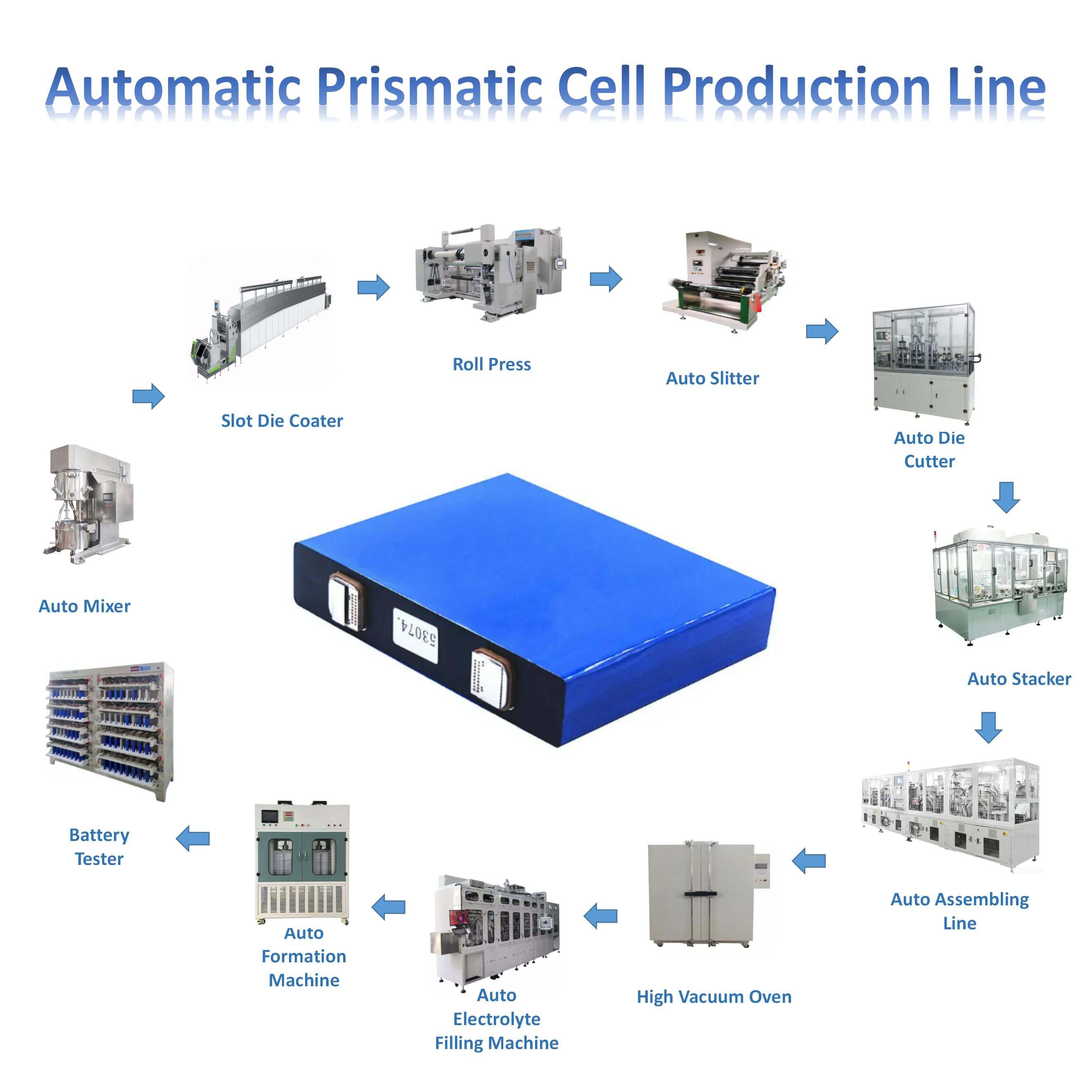

Here is a comprehensive list of prismatic battery manufacturing equipmentcommonly used in the manufacturing process:
Electrode Preparation Equipment:
a. Material Mixing System: Combines active materials, binders, conductive additives, and solvents to create an electrode slurry.
b. Coating Machine: Applies the electrode slurry onto current collectors, ensuring uniform and precise coating thickness.
c. Drying Oven: Removes solvents from the coated electrodes, ensuring proper adhesion.
Slitting and Cutting Equipment:
a. Slitting Machine: Cuts the coated electrode into precise widths to match cell design requirements.
b. Die Cutting Machine: Cuts prismatic-shaped electrodes and separators accurately.
Cell Assembly Equipment:
a. Stacking Machine: Automates precise stacking of electrode layers and separators to form the prismatic cell assembly.
b. Tab Welding Machine: Performs welding to connect the tabs of electrode layers to current collectors, establishing electrical connections.
c. Lamination Machine: Applies pressure and heat to bond electrode layers and separators together, ensuring proper adhesion and integrity.
d. Ultrasonic Welding Machine: Seals prismatic cells by ultrasonically welding the cell edges.
Electrolyte Dispensing and Filling Equipment:
a. Dispensing System: Accurately dispenses electrolytes into prismatic cell components, ensuring proper volume and uniform distribution.
b. Electrolyte Filling Machine: Fills prismatic cells with electrolyte, ensuring complete coverage and avoiding air pockets.
Formation and Testing Equipment:
a. Formation Chamber: Conditions and stabilizes prismatic cells' electrochemical performance through controlled temperature and current conditions.
b. Battery Testing Systems: Conducts tests such as capacity measurement, cycling tests, impedance analysis, and safety tests to evaluate performance and characteristics.
Module and prismatic battery pilot equipment :
a. Module Formation Machine: Integrates multiple prismatic cells into modules, including busbars, interconnections, and thermal management systems.
b. Pack Assembly Line: Integrates modules into battery packs, incorporating safety features, wiring harnesses, control systems, and thermal management components.
Quality Control and Inspection Equipment:
a. Vision Inspection Systems: Utilizes cameras, image analysis algorithms, and artificial intelligence to inspect and verify the quality of prismatic batteries, including electrode layers, alignments, welds, and overall cell/pack integrity.
b. Testing and Measurement Instruments: Includes voltage meters, capacity analyzers, impedance analyzers, and thermal cameras for quality control and performance evaluation.
Automation and Robotics:
a. Robotic Arms: Perform tasks such as stacking electrodes, precise alignment, welding, and handling delicate components, enhancing accuracy and productivity.
b. Conveyor Systems: Transport prismatic battery components between manufacturing stations, ensuring efficient and continuous production flow.
These equipment types play vital roles in the precise and efficient prismatic battery lab equipment batteries, ensuring consistent quality and performance.
No. 5 Nanshan Road, Huli District, Xiamen City, Fujian Province, China
 Subscribe to us
Subscribe to us ONLINE
ONLINE Louis@lithmachine.com
Louis@lithmachine.com +0086 15959378975
+0086 15959378975